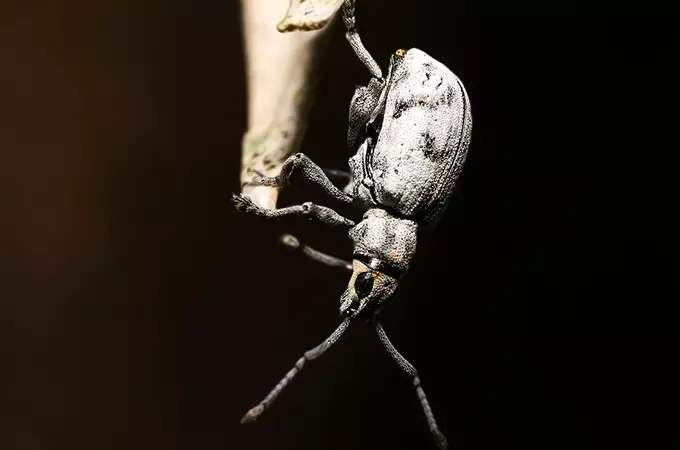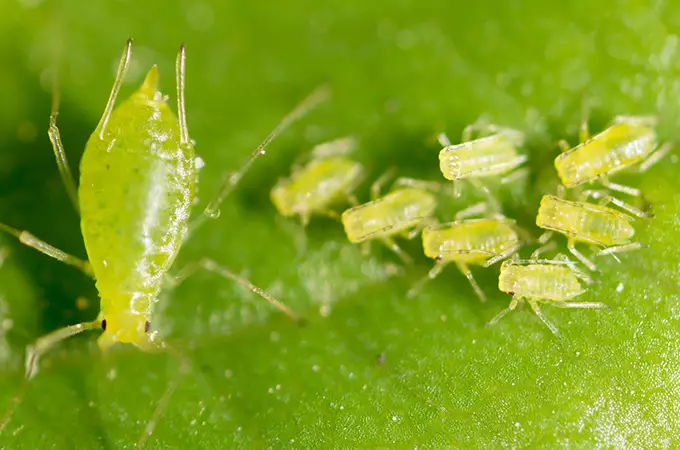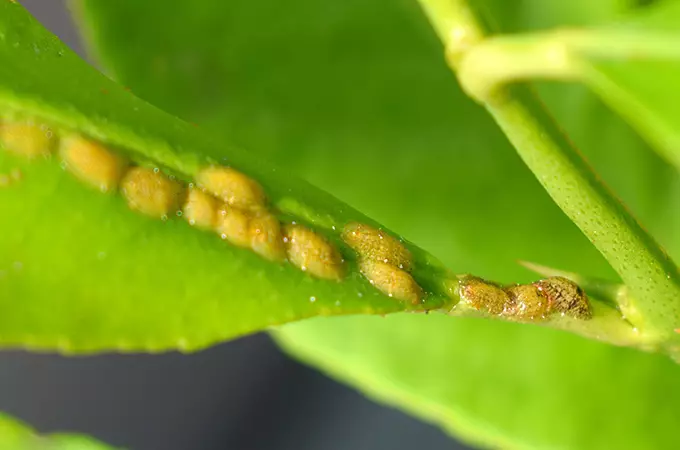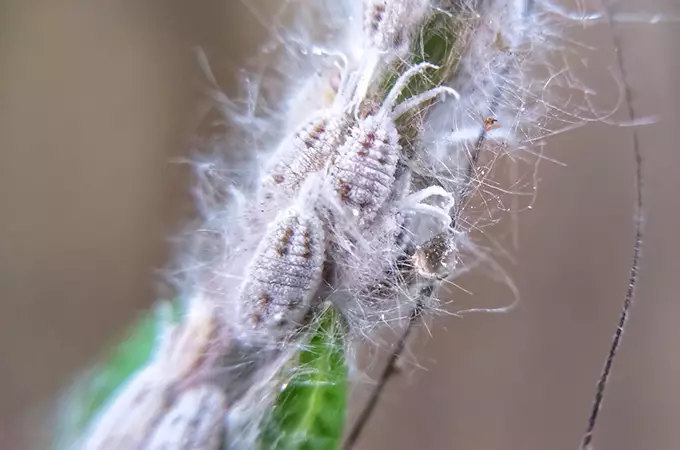Tree & Shrub Insects in florida
Pest Library
Florida is home to some pests that are steadily becoming more problematic for our trees and plants.
Sri Lanka Weevil

What do Sri Lanka weevils look like?
Sri Lanka weevils are a small (1/4” long), white and gray insects that have two antennae on their heads and black eyes.
When are Sri Lanka weevils most active?
Sri Lanka weevils are a year-round concern for Floridians, but they seem to have an increased level of presence and activity in the spring when plants are producing new foliage.
What attracts Sri Lanka weevils?
Sri Lanka weevils are attracted to a wide range of host plants here in Florida. These plants include at least 68 tropical fruit trees, palms, ornamental plants, upland cotton, and citrus. Mango and lychee trees are particular favorites in South Florida.
Where are you likely to find Sri Lanka weevils?
Sri Lanka weevils are most likely found in the trees and plants that they have targeted.
Are Sri Lanka weevils dangerous or destructive?
Sri Lanka weevils are very destructive to trees and plants in two ways: adults cause severe damage to the foliage and the larvae feed on the roots of the plants or trees that they have targeted. This inhibits the host plant’s growth and can lead to its death.
Aphids

What do aphids look like?
Aphids are tiny (1/8” long), pear-shaped insects whose color varies by species. However, the most common aphids in Florida are black, green or yellow.
When are aphids most active?
Aphids are most active in the spring, which is when their reproduction is at its peak.
What attracts aphids?
Aphids will attack all plant parts, but they are very attracted to succulent, young growth. They like low-light levels and the cooler temperatures of the spring and the fall.
Where are you likely to find aphids?
Aphids are most usually found on the following plants in Florida:
- Camellia
- Crape myrtle
- Gardenia
- Oleander
- Photinia
- Rose
- Viburnum
- Hibiscus
They are usually located on the stems and undersides of leaves and on the actual flower buds.
Are aphids dangerous or destructive?
Aphids are destructive to the plants that they attack. Aphids suck juices from the leaves of their host plant which causes the leaves to curl and inhibits the overall plant’s growth. Aphid larvae attack the roots of plants inflicting great damage. These prolific breeders can produce 50 to 100 offspring and each of these offspring can start reproducing in six to eight days. This makes their population increase extremely quickly, thus making them a very dangerous and destructive pest.
Also, the presence of Aphids can lead to the presence of other nuisance pests. Aphids excrete honeydew, which is a prized food source for many species of ants.
Soft Scales

What do soft scales look like?
Adult female scales and immature nymphs of most scale species are circular or oval, wingless and lack a separate head. Adult males are rarely seen, as they are a tiny, delicate insect with one pair of wings and a pair of long antennae. Some scale species lack a male and the female actually reproduces without mating. Scales range in size from 1/8 of inch up to ¼ of an inch. Per the University of Florida, (http://edis.ifas.ufl.edu/ch195) our great state is home to the following scale species:
- Purple scale
- Glover Scale (long scale)
- Fern Scale
- Citrus Snow Scale
- Florida Red Scale
- Chaff Scale
- Caribbean Black Scale
- Cottonycushion Scale
- Soft Brown Scale
- Florida Wax Scale
When are soft scales most active?
When the weather is warmest these plant inhibiting insects can increase significantly, which means that they are a year-round concern here in Florida.
What attracts soft scales?
Soft scales are attracted to ornamental plants, Hollies, landscape shrubs, and trees.
Where are you likely to find soft scales?
Soft scales are likely to be found on the leaves and stalk of any shrub, plant or tree that they have decided to infest. These tiny infesting insects can be found in greenhouses and commercial crops alike.
Are soft scales dangerous or destructive?
Soft scales can be destructive to the plants or trees that they have attached themselves to. Not only can they damage it with their eating habits of it, but their secretion, honeydew, is a sticky substance that attracts mold and mildew and other pests that can be damaging to the plant. Control measures for these destructive pests cost commercial greenhouses owners and crop growers millions of dollars a year.
Mealybugs

What do Mealybugs look like?
Mealybugs are a small, 1/8 of an inch, soft-bodied insects that are often covered with white filaments. They are bodies themselves are usually a pinkish or yellowish color.
When are Mealybugs most active?
Mealybugs can be a problem year-round in Florida homes and greenhouses.
What attracts Mealybugs?
Mealybugs are attracted to warm and humid areas that offer them plants to feed on.
Where are you likely to find Mealybugs?
Mealybugs move around their whole lives. They infest all plant parts:
- Feeder roots
- Leaves
- Flowers
- Fruits
- Root crowns
- Stems
- Twigs
They seem to prefer ornamentals, shrubbery and landscape trees, but can be found on just about any type of plant. These destructive insects cost commercial greenhouse owners and crop growers millions of dollars each year in control efforts.
Are Mealybugs dangerous or destructive?
Mealybugs are quite destructive to the plants that they feed on. They have a specialized mouth part that enables them to puncture the plant and suck out the plant’s juices. This damage can severely injure it and ultimately cause inadequate growth or death.